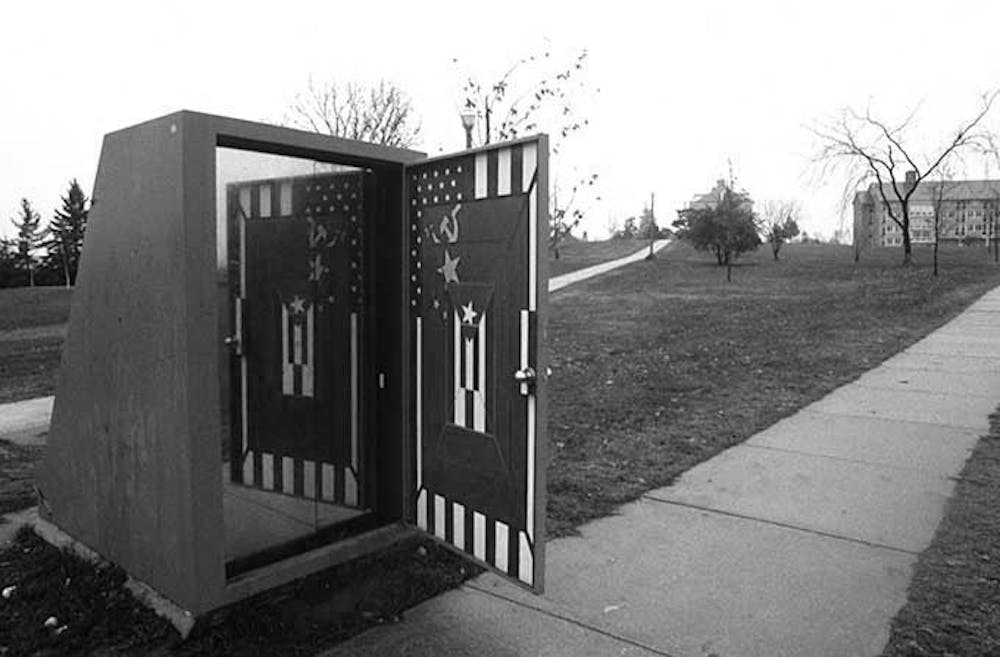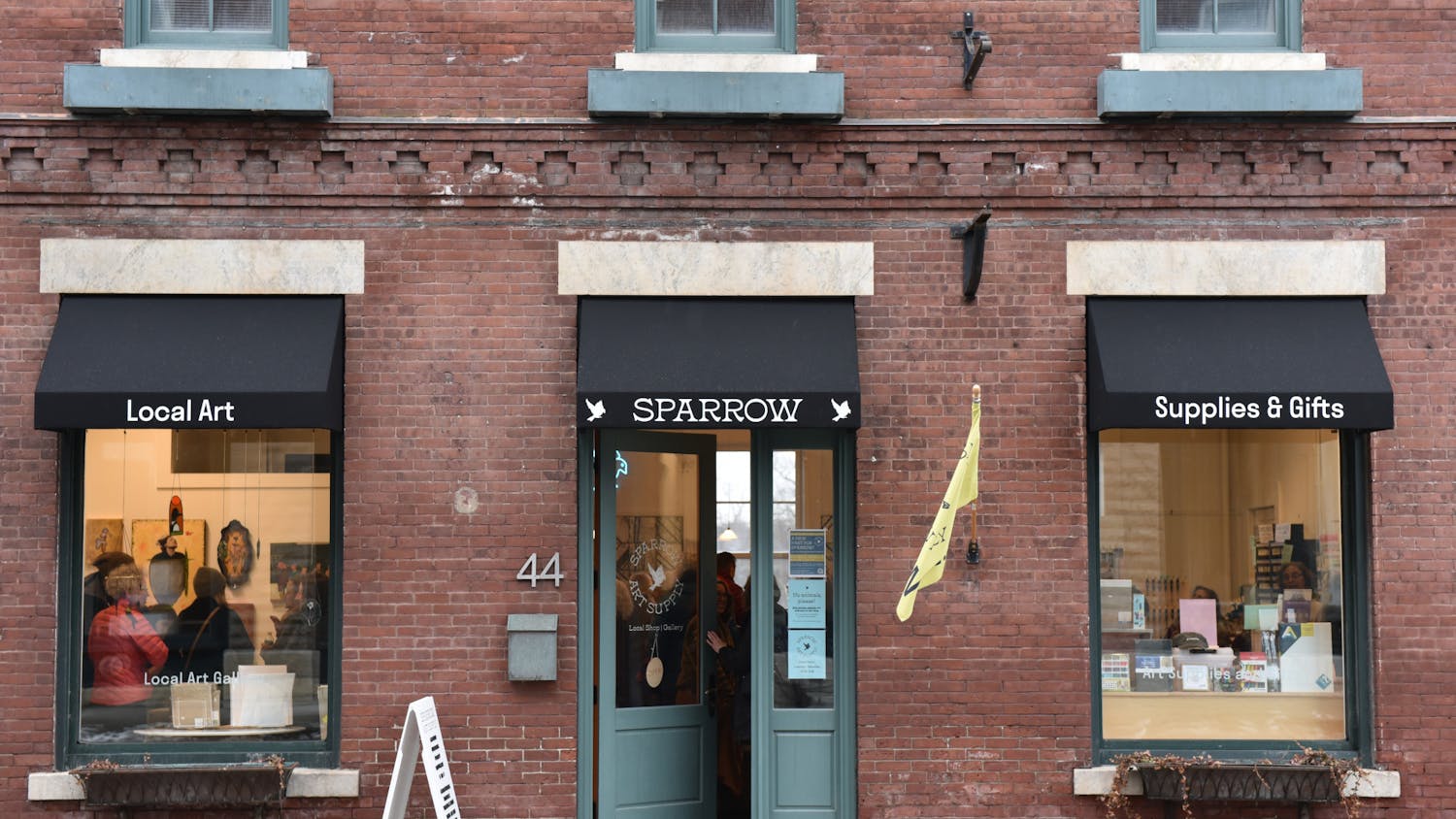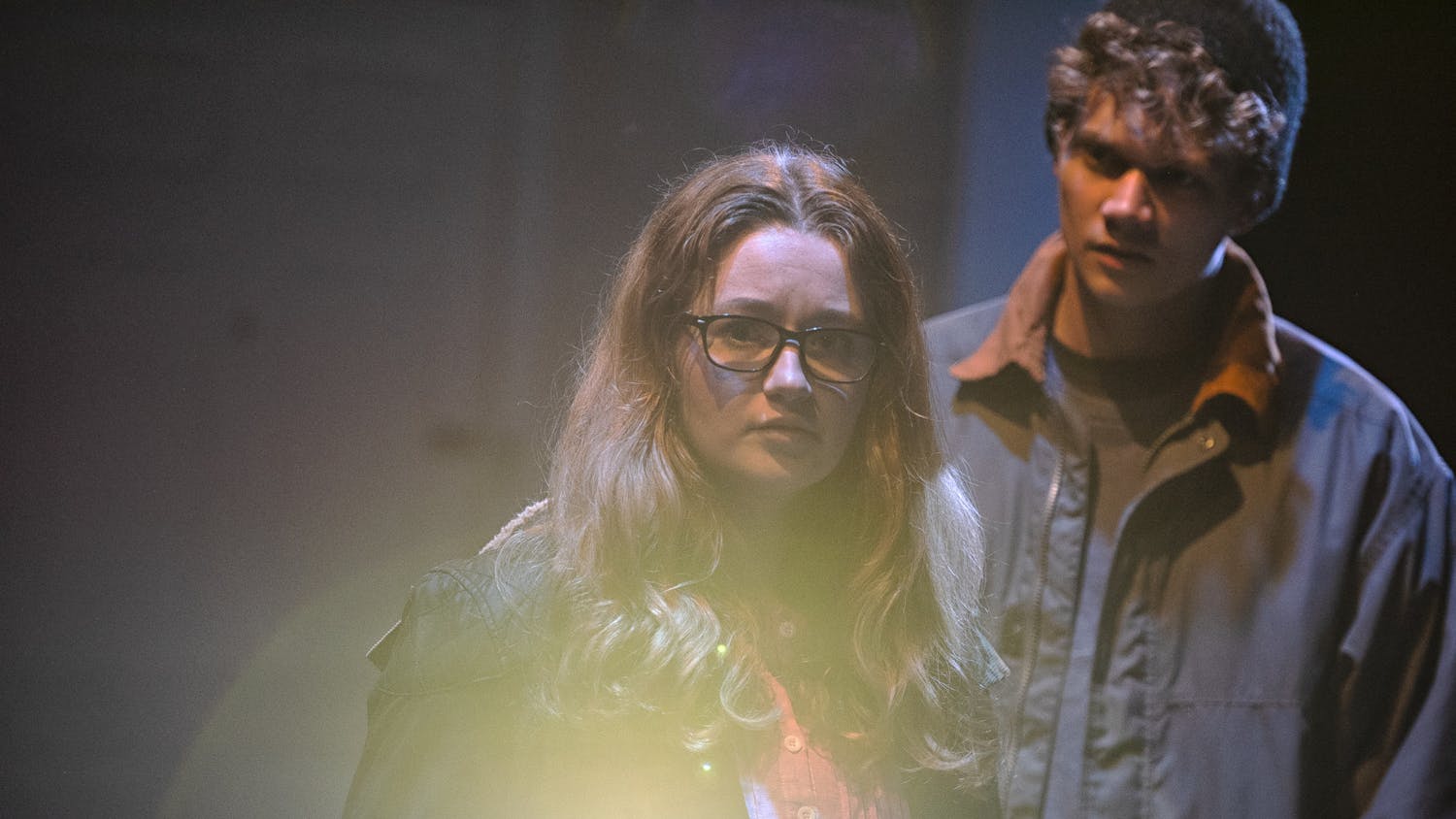On top of a small incline adjacent to the Mahaney Center for the Arts sits a small, steel structure that appears to be housing electrical equipment. Upon taking a closer look, the back of the piece resembles a house of cards, and viewers realize that they are looking at a work of art. This sculpture is a part of the current Museum of Art exhibition Vito Acconci: Thinking Space, and it carries a controversial 30-year history at the College.
When prominent visual and performing artist Vito Acconci came to the College as a Visiting Professor of Studio Art in 1983, his public, participatory art spurred impassioned reactions. Acconci’s J-term course, “Art in Public Spaces,” included an installation of thought-provoking sculptural pieces throughout the campus. One piece in particular, a steel sculpture called Way Station (Thinking Space) was described by the artist as “A closet-like structure by the side of the road, at a college campus, that descends to a partially underground space that can serve as a study room … A way station can come mid-way to the journey ...”
This structure, Acconci’s first permanent architectural commission, was erected on what was the busiest pathway on campus, halfway between what are now the Ross complex and the Freeman International Center. Community members entered the sculpture, finding a flag within a flag design on the inside door and a sliding mirror door directly in front of them. Upon entering, participants found a table, concrete seat and shelving unit, and could sit hunched inside to accommodate the sloping back wall. On the back wall, a person inside the structure could rearrange nine panels, letters spelling out “God,” “Man” and “Dog,” on one side and playing cards on the other.
Students and community members immediately reacted to the piece, many calling it a waste of space and an eyesore. The Committee to Relocate the Acconci Sculpture was formed in April of 1983, and hundreds of students signed a petition to move the sculpture to a more secure, and less public, location.
The petition’s main argument was that “people who don’t want to look at it shouldn’t have to.” As time went on, students and faculty continued to complain about what they felt was an oddly located and ugly piece, and the structure was repainted four times due to varying degrees of vandalism.
Museum Curator Emmie Donadio recalls the difficulties of housing a new kind of participatory art form.
“We never thought about vandalism or security,” she said. “There was no public sculpture on campus before the art museum, and there was no administration to oversee the structure. The only people with responsibility would have been the art gallery.”
The drama surrounding the sculpture reached a breaking point after the graduation ceremony of 1985, when the sculpture was ignited by a blow torch and 75 percent of the piece caught on fire.
Part of the College’s history is revitalized with Vito Acconci: Thinking Space, which honors the artists’ career and features a replication of the controversial Way Station (Thinking Space) sculpture, now behind the pond by the Mahaney Center for the Arts.
The exhibit marks the 30th anniversary of Acconci’s residency and celebrates his varied works, particularly in architecture. After experimenting in the field with Way Station (Thinking Space), the artist founded the Acconci Studio and worked internationally as a designer of public places. Projects have included, among others, retail stores, recreation facilities, airport terminals, and recycling plants. The exhibit on display now surveys Acconci’s career through a timeline of photographs, diagrams, videos and explanations written by the artist stretching around the walls of the museum space.
Acconci’s work boldly asks for participants and consistently returns to the theme of both blending in and sticking out. On the other side of the exhibition space, a timeline details the construction of Way Station (Thinking Space), augmented by articles from The Campus tracking the controversy of the piece. Six of the original playing card/letter panels are in the exhibition, some clearly scorched by fire, and there are also details of the reconstruction of the sculpture, called Way Station (Thinking Space) II. The remnants of the original steel shell were reused, and the only primary difference between the replica and original is location.
Donadio stressed the significance of Acconci’s piece to the College.
“This reconstruction has been a project of Museum Director Richard Saunders since he arrived at the museum in 1985,” said Donadio. “The piece is a historic monument – we want people to know about it, what it represents, the thought that went into it and what it conveys. Acconci’s work partly inspired The Committee on Art in Public Places, which oversees 22 works now on campus.”
Despite the negative reactions to his work, Acconci accomplished his goal of using art as a public conversation piece and forever changed the Middlebury College art community as a result.
Now a member of the Art Faculty of the City University of New York and at Pratt Institute, as well as an active architectural designer, Acconci returns to campus on Thursday, Nov. 7 at 7 p.m. for a free illustrated talk in Dana Auditorium. He will also visit with students in programs in Studio Art and Architectural Studies.
Vito Acconci: Thinking Space is currently on exhibition in the Overbrook Gallery until Dec. 8, and Way Station: Thinking Space II will be unveiled the weekend of Oct. 18. This fascinating sculpture and artist pair has a unique connection to the Middlebury community, and even those uninterested in art will appreciate Acconci’s talk and innovative design style.
Controversial Sculpture Returns to Campus

Comments



